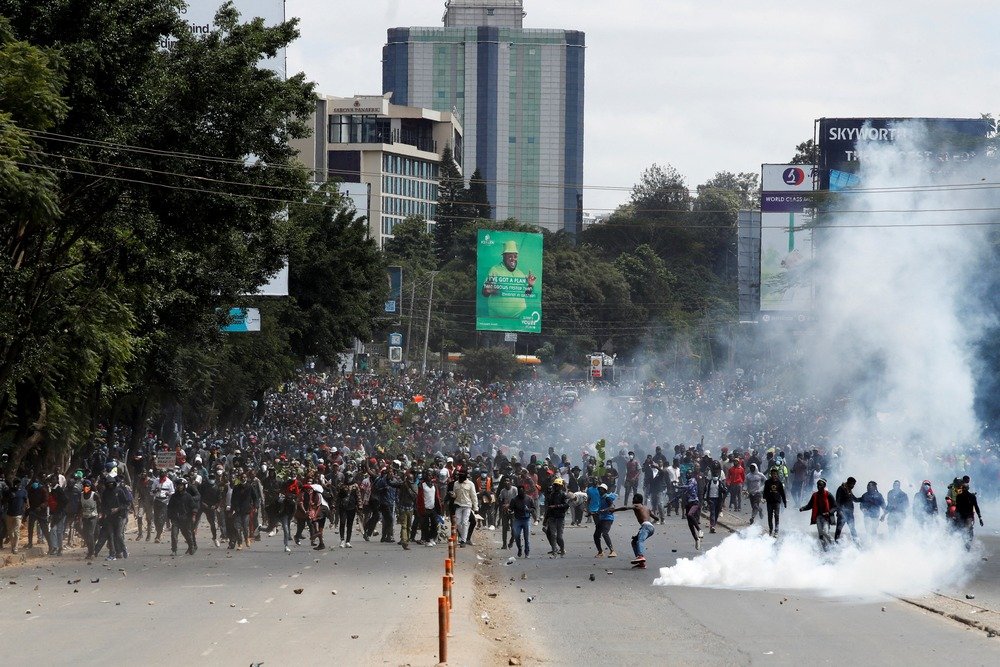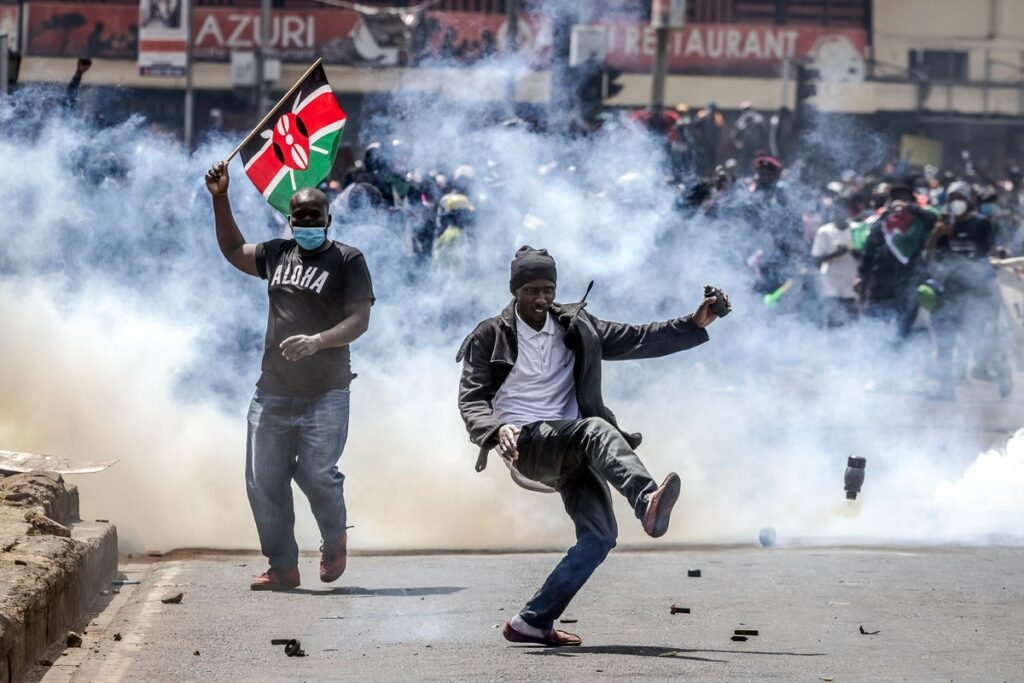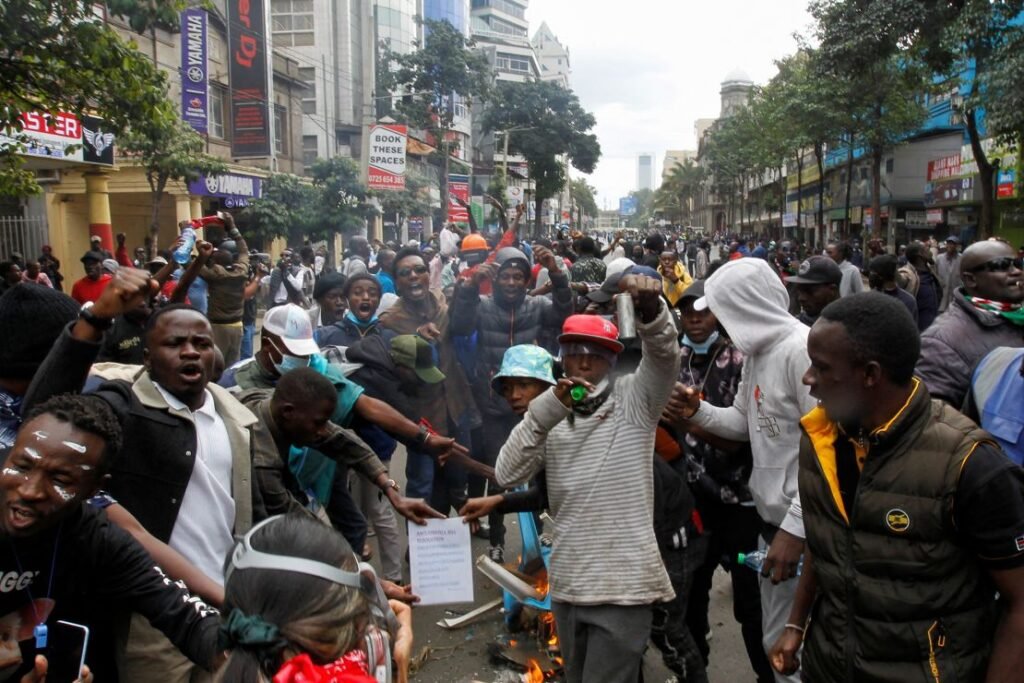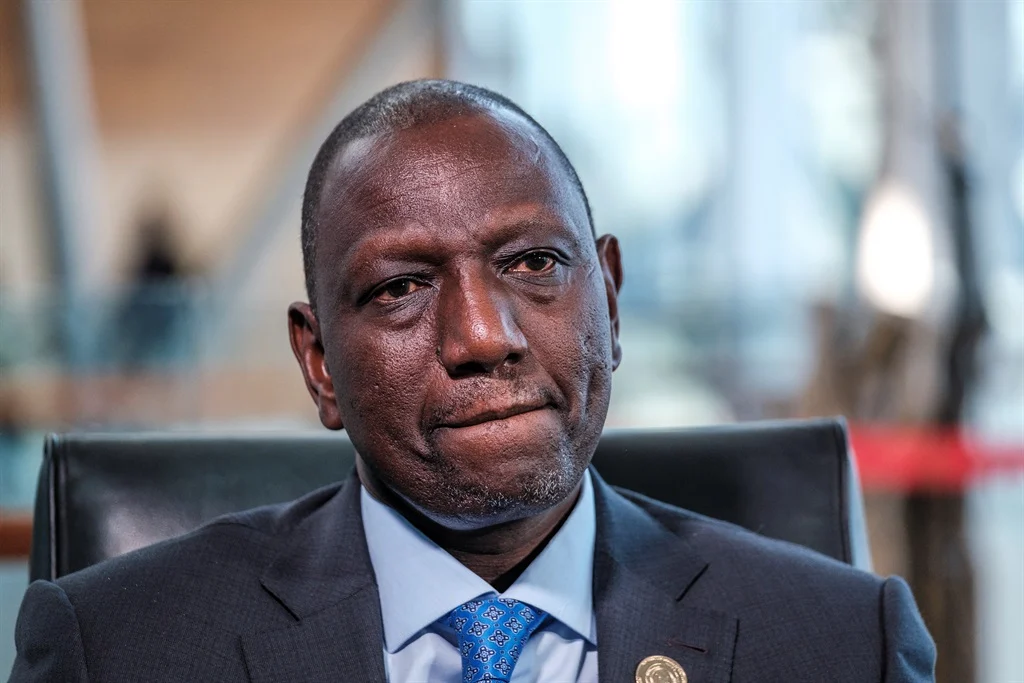
Kenya’s Revolution: A Youth-Led Movement Rises Against Economic Injustice and Corruption
Kenya has witnessed a historic wave of protests following the passing of the Finance Bill 2024, which sparked an unprecedented mobilization of Kenyan youth, workers, and citizens from all walks of life. This bill, imposing heavy taxes on essentials like healthcare, fuel, and sanitary products, was passed by parliament with 195 votes in favor and 106 against, sending shockwaves through the nation. Within hours, thousands of demonstrators stormed parliament in protest, marking a turning point for a movement now challenging not only the Finance Bill but the very structure of Kenya’s governance.
On the day of the vote, cities across Kenya came alive with protests as youth and workers flooded the streets, defying heavy police presence and live ammunition. This movement, which began as a campaign against austerity, has now transformed into a nationwide call for President William Ruto’s resignation and a complete overhaul of the ruling establishment.

United by the hashtags #RutoMustGo, #RejectFinanceBill2024, and #RevolutionNowOrNever, Kenyans are demanding an end to economic policies they view as tools of oppression, imposed by a government prioritizing international financial interests over the well-being of its citizens.
A Turning Point: Concessions Amid Unyielding Pressure
The scale and intensity of the protests have compelled Ruto’s administration to make significant concessions. Initially condemning protestors as “criminals,” Ruto soon changed his tone, proposing a dialogue with youth leaders and promising to reconsider the Finance Bill. Flanked by MPs, he pledged to return the bill to parliament, acknowledging the need to address the concerns of Kenya’s youth. However, many demonstrators see these moves as a temporary tactic to diffuse tension, warning that Ruto’s promises are merely an attempt to buy time before reinstating the bill once the protests subside.

Despite Ruto’s shift in rhetoric, anger remains high. Kenyans have not only targeted the government but also directed their criticism at religious leaders and corporations, such as Safaricom, that have allegedly enabled repression by disrupting internet access during key protests. The religious establishment, a powerful force in Kenyan politics, has also come under fire for its perceived support of Ruto’s policies, with protestors condemning clergy figures as complicit in the suffering of ordinary Kenyans.
The Cost of Dissent: Escalating Violence and the Quest for Justice
The uprising has come at a high cost, with reports of widespread police brutality. Kenya’s Police Reforms Working Group documented over 23 deaths, 50 arrests, and countless injuries resulting from police action. One particularly harrowing report claims that police shot a protestor over 40 times after a demonstration had ended, underscoring the extent of the state’s efforts to suppress the movement.
In response, protestors displayed their resilience, carrying the bodies of victims to parliament gates, a stark reminder of the costs borne by those who dare to challenge the state. Images of youth carrying the parliamentary Mace through the streets have come to symbolize the defiance of Kenya’s youth, who, much like protestors in Sri Lanka’s 2022 revolution, have shattered the illusion of inviolable state power. The seizure of parliamentary spaces and the storming of government buildings underscore the movement’s resolve, as thousands rally to not only reject the Finance Bill but to dismantle the structures enabling Kenya’s cycle of poverty and repression.
Lessons from Sri Lanka: The Importance of Revolutionary Leadership
The Kenyan movement echoes the 2022 Sri Lankan uprising, which toppled a corrupt government through widespread protest and grassroots organizing. In both cases, disillusionment with traditional political parties has united protestors across societal divides under slogans like “fearless, tribeless, partyless.” This unity reflects a rejection of established political factions that, in the eyes of the protestors, serve the interests of the elite and foreign financial institutions rather than the Kenyan people.
However, Sri Lanka’s experience highlights a critical challenge: sustaining momentum without a cohesive leadership structure. While Kenya’s youth have displayed remarkable resilience and unity, the absence of a clear leadership strategy risks leaving the movement vulnerable to co-optation by opportunistic factions. To avoid this pitfall, Kenyan activists are calling for the formation of local organizing committees to build a grassroots leadership that genuinely reflects the movement’s demands and resists compromise with the ruling elite.
Charting the Way Forward: Building a New Future for Kenya
The Finance Bill may have triggered Kenya’s protests, but the movement’s goals have since expanded to encompass a broader demand for social and economic justice. Many protestors argue that even if the bill is ultimately repealed, Kenya’s systemic issues, including foreign debt and economic inequality, will persist. Kenya’s debt, now surpassing $80 billion, reflects an economy burdened by obligations to international financial institutions like the IMF and World Bank. Protestors warn that unless Kenya breaks free from these economic dependencies, any government — whether led by Ruto or the opposition — will continue to prioritize austerity measures over the needs of its people.
To counter the influence of entrenched economic powers, activists are advocating for a revolutionary approach, one that rejects the neoliberal framework in favor of a people-centered governance model. Calls for expropriating large corporations, canceling foreign debt, and implementing a socialist economic plan have gained traction among the youth and working class, who see these measures as essential to addressing Kenya’s economic crisis at its root.
Toward a Revolutionary Transformation
Kenya’s revolution is at a critical juncture. The upcoming “Million People March” aims to mobilize masses on an unprecedented scale, with organizers urging citizens to block all major roads leading to Nairobi. This demonstration, if successful, could bring the nation to a standstill, further weakening the government’s grip on power. Yet, to ensure lasting change, protestors recognize the need for organized leadership capable of steering the movement toward concrete goals.
For Kenya’s youth, the struggle is no longer just about the Finance Bill or even Ruto’s presidency; it is a fight to reclaim Kenya’s future from a ruling elite they perceive as beholden to foreign interests. By establishing local committees and fostering solidarity among workers, students, and the impoverished, the movement aims to create a framework for a truly representative government.

As Kenya’s youth rise against economic injustice, their actions signal a broader call for change that resonates beyond national borders. With each protest and each act of defiance, Kenya’s revolution grows, challenging not only the current government but the entire system that upholds economic exploitation. The world watches as Kenya’s youth pave the way for a new era, one where the power to shape the nation’s destiny lies firmly in the hands of its people.

